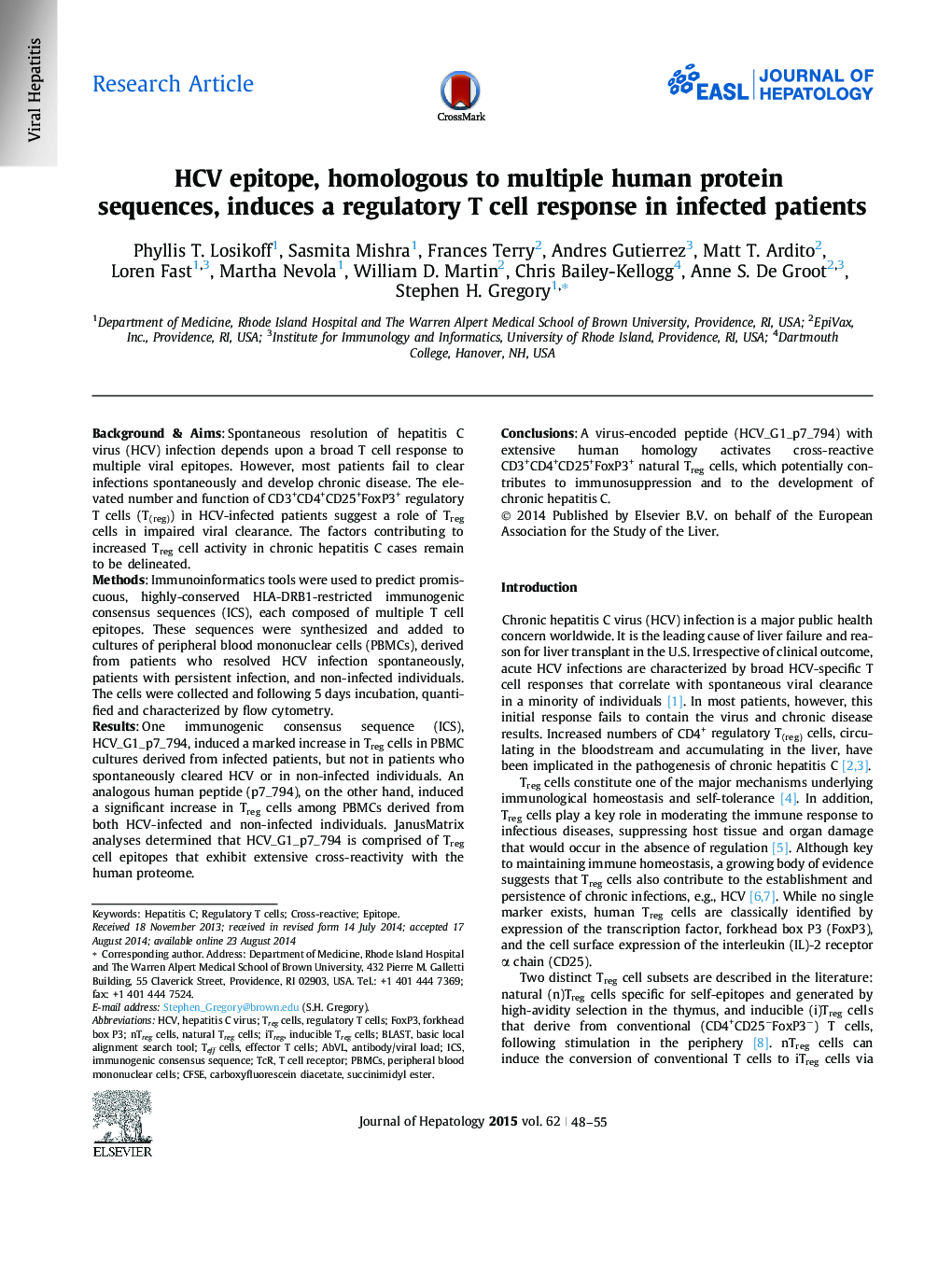| Article ID | Journal | Published Year | Pages | File Type |
|---|---|---|---|---|
| 6102917 | Journal of Hepatology | 2015 | 8 Pages |
Background & AimsSpontaneous resolution of hepatitis C virus (HCV) infection depends upon a broad T cell response to multiple viral epitopes. However, most patients fail to clear infections spontaneously and develop chronic disease. The elevated number and function of CD3+CD4+CD25+FoxP3+ regulatory T cells (T(reg)) in HCV-infected patients suggest a role of Treg cells in impaired viral clearance. The factors contributing to increased Treg cell activity in chronic hepatitis C cases remain to be delineated.MethodsImmunoinformatics tools were used to predict promiscuous, highly-conserved HLA-DRB1-restricted immunogenic consensus sequences (ICS), each composed of multiple T cell epitopes. These sequences were synthesized and added to cultures of peripheral blood mononuclear cells (PBMCs), derived from patients who resolved HCV infection spontaneously, patients with persistent infection, and non-infected individuals. The cells were collected and following 5Â days incubation, quantified and characterized by flow cytometry.ResultsOne immunogenic consensus sequence (ICS), HCV_G1_p7_794, induced a marked increase in Treg cells in PBMC cultures derived from infected patients, but not in patients who spontaneously cleared HCV or in non-infected individuals. An analogous human peptide (p7_794), on the other hand, induced a significant increase in Treg cells among PBMCs derived from both HCV-infected and non-infected individuals. JanusMatrix analyses determined that HCV_G1_p7_794 is comprised of Treg cell epitopes that exhibit extensive cross-reactivity with the human proteome.ConclusionsA virus-encoded peptide (HCV_G1_p7_794) with extensive human homology activates cross-reactive CD3+CD4+CD25+FoxP3+ natural Treg cells, which potentially contributes to immunosuppression and to the development of chronic hepatitis C.
